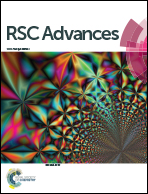Systems pharmacology and molecular docking strategies prioritize natural molecules as cardioprotective agents†
Abstract
Natural compounds can interact with multiple cellular target proteins and may be prioritized as drug leads. There is a need for prioritization of compounds that protect cardiovascular systems from pathological conditions. Here we prioritize morin, veratric acid, piperine, syringic acid, vanillic acid, diosgenin, diosmetin and sinapic acid that were already identified as cardioprotective molecules in our previous studies through multi-level data integration. In this study, initially we predict targets of the above-mentioned compounds by reverse pharmacophore (PharmMapper) and structural similarity based target-screening methods. We also explored the compound–target pathways (Biocarta and KEGG) and disease relationships. Further, we chose public microarray transcriptomic data from GEO to prioritize important pathogenic targets (heart failure, cardiac hypertrophy, vascular dysfunction and atherosclerosis), and we explored the interaction potential of the above compounds on the targets via blind docking (AutoDock Vina). Moreover, the multi target action of compounds was revealed by target information retrieved from large-scale text mining and organized databases (HIT and TCMID). The drug likeness profile and toxicity prediction was achieved based on Lipinski's rule and structural similarity search (ProTox). The observed results have demonstrated that the multi target potential and less toxic nature mean these molecules can be prioritized as lead compounds for cardiovascular diseases.


 Please wait while we load your content...
Please wait while we load your content...